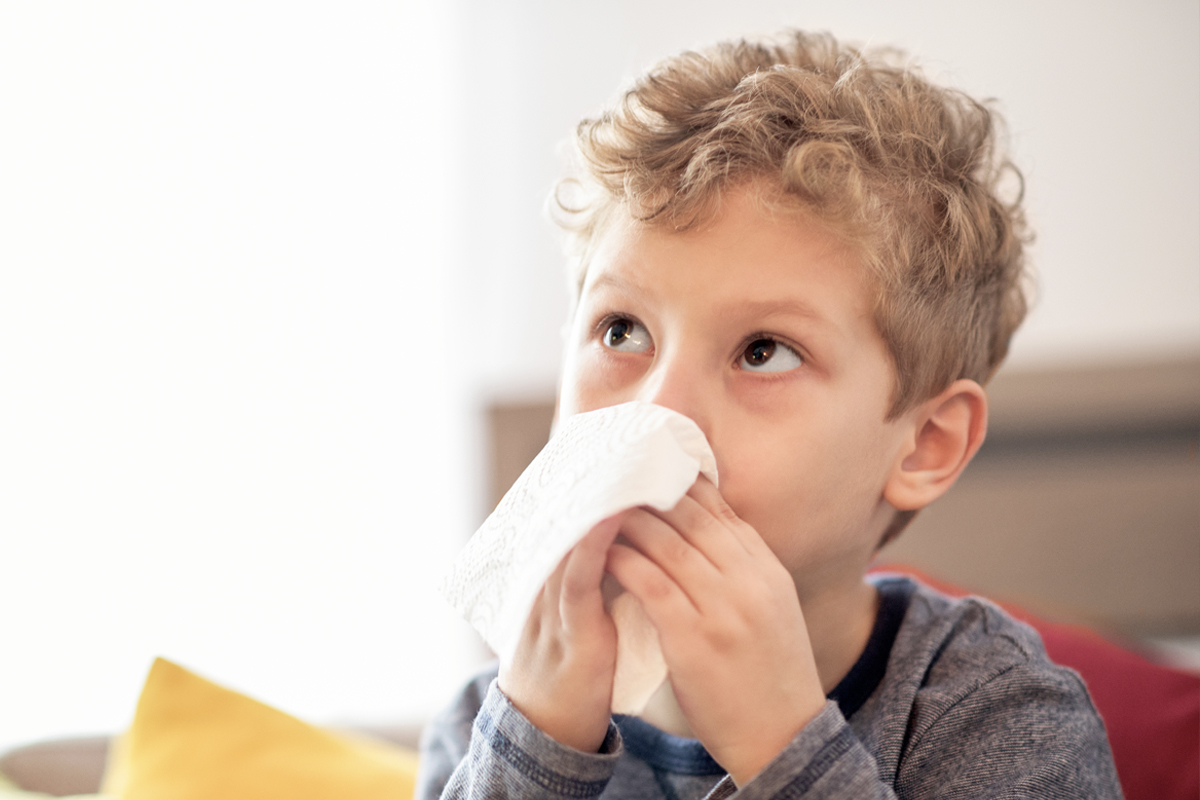
Tis the season for seasonal allergies in Oregon. Flowers are blooming, the grass is growing, and pollen is floating through the air, covering your car and tickling your nose. Coming off an exceptionally bad cold, flu, RSV, and COVID season, it can be challenging to determine if your or your child’s sniffle is from allergies or another cold. Both allergies and colds can have similar symptoms, but there are a few ways to tell the difference.
What are Seasonal Allergies?
Unlike the common cold, caused by a virus, seasonal allergies are your body’s way of reacting to different allergens. The allergens your body reacts to are different for each person; some of the top allergens are tree, grass, ragweed, and mold. However, you can be allergic to almost anything, and some people even have allergic reactions to specific flowers or only specific types of trees or plants.
How Can I Tell the Difference Between a Cold and Allergies?
Unfortunately, many symptoms that occur with allergies also happen with a cold, so it can be challenging to determine which one you are experiencing. Here are the common symptoms you may experience:
Allergy Symptoms:
- Itchy eyes
- Sneezing
- Runny nose
- Congestion/feeling stuffy
- Feeling tired
Cold Symptoms:
- Cough
- Body aches
- Feeling tired
- Sneezing
- Sore throat
- Runny nose
- Congestion/feeling stuffy
- Fever
As you can see, there is a lot of similarity between the two, but if your symptoms begin with a fever, sore throat, or body aches, that can be a telltale sign you are fighting a cold, not allergies. Colds are also less likely to cause itchy eyes. If you have had recent exposure to anyone with a cold or your children are in daycare or school, it can also make it more likely that you are experiencing a cold versus seasonal allergies. Seasonal allergies can come and go when exposure to allergens is higher, or they can last for several weeks when pollen counts are higher. Colds will also follow a more predictable path, with symptoms lasting around 7-10 days on average.
How are Allergies Diagnosed?
Allergies are typically self-diagnosed when someone is experiencing symptoms. However, when allergies become disruptive and are not responding to at-home treatment options, you may decide to visit a medical provider for a diagnosis. After speaking to your doctor or provider, they may suggest allergy testing, which can help to identify specific allergens you react to. Allergy testing can be done in two ways:
Skin Tests: the provider will use a small part of the allergen (called a protein) and scrape it on your skin. You will be monitored for a set amount of time to see if you develop a reaction, usually a red or raised area.
Blood Tests: with this method, a blood sample will be taken and sent to a lab to test for antibodies that can cause allergic reactions. These tests may be called IgE, radioallergosorbent test (RAST), or ImmunoCAP.
Most people do not undergo allergy testing, but if your or your child’s symptoms are more severe or do not respond to medication, it may need to occur.
How to Treat Allergies?
You have a few options for treating seasonal allergies but consulting with your doctor or child’s pediatrician is always the best idea. They can recommend medications that will target your specific symptoms and ensure they will not interact with your current medications or cause unwanted side effects.
Treatments:
- Medication: there are both over-the-counter and prescription medications available. These medications can be taken by mouth as a pill or liquid, through your nose as a spray, or through your eyes as drops. All of these medications work to decrease your symptoms.
- Immunotherapy: this treatment method is used for people with severe allergies or when your symptoms are not improving after using medication. Immunotherapy is either a series of injections or medication dissolved under your tongue. The injections can occur over months or years at regular intervals. They inject extracts of an allergen to help your body not react as strongly when it encounters the allergen in real life. The medications that dissolve under your tongue are better suited for people struggling with pollen allergies.
Ways to Reduce Allergens in Your Home
This is easier said than done, especially in Oregon, where your allergen trigger may be everywhere this time of year. Here are a few tips you can try to avoid or reduce your allergen exposures:
- You can remove trees, plants, and flowers from inside or around your home that may be causing symptoms.
- Make sure to change your in-home furnace filter regularly and consider upgrading to a higher filtration rating.
- Utilize air purifiers and keep windows closed during times of high pollen.
- Some people also wear a mask during peak allergy season to reduce their exposure when outside their homes.
Final Thoughts
When in doubt, you can always consult your physician or pediatrician, who can assess your or your child’s symptoms and give you a more definitive answer. They can also provide individualized treatment and prevention recommendations. Allergies can be bothersome and disruptive, just like a cold, so being prepared can help lessen the severity. Unfortunately, one of the downsides of Oregon’s natural beauty is the unavoidable seasonal allergies. Still, having the right information can help you determine whether your kid’s runny nose or your own is pollen-induced or just another cold.

Brooke is a registered nurse and freelance writer with 10+ years of clinical nursing experience. She graduated from The University of Portland School of Nursing. Brooke grew up in Oregon and spends her free time with her husband and two young children exploring the Pacific Northwest.
